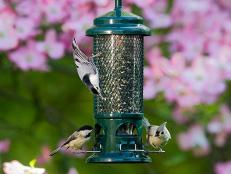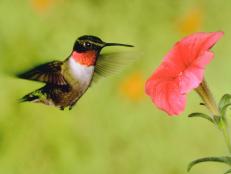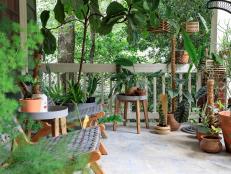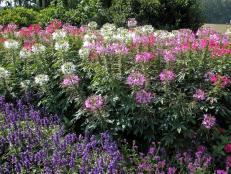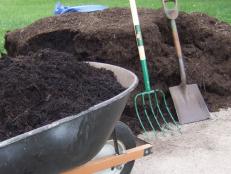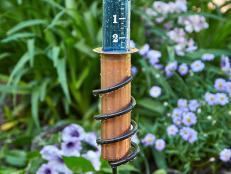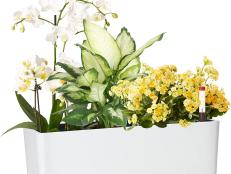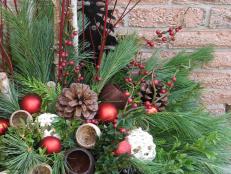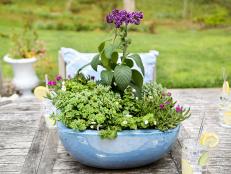For the Birds: How to Attract Wildlife in Winter
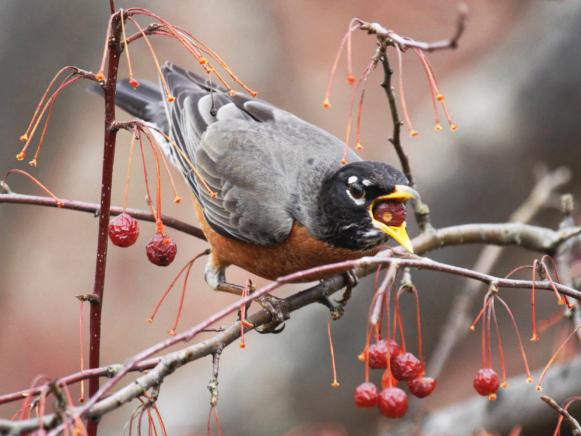
Most homeowners enjoy attracting birds to their garden throughout the spring and summer. But it's during the winter that birds need our help the most, since they spend nearly all of their time and energy then seeking food, shelter and water.
"Winter is a desperate time for a lot of birds," affirms Kim Eierman, a certified horticulturist and master gardener, who teaches at both the New York Botanical Garden and the Brooklyn Botanic Garden.
With a little planning, your yard can become a prime spot for birds to fuel up and take refuge during those long, cold months. The key is to select a mix of plantings, shrubs and trees that offer birds the protection and food they need to survive.
Not only will you enjoy seeing and hearing birds all year long—the plantings you choose will also bring colorful fruits and leaves to your winter landscape, too.
Think in Layers
Different types of birds prefer to seek shelter and food at different heights, so think of your yard or garden in terms of these naturally occurring layers: a canopy of tall trees, an under-canopy of smaller trees, a shrub layer, and vines or ground cover. The greater the mix of vegetation you can provide at various heights, the greater the variety of birds you're likely to attract.
Aim for a tiered effect, with larger trees at the border, followed by smaller trees and clumps of bushes, then tall grasses and low flowers. "This kind of approach mimics nature," says Doug Gagne, APLD, a landscape designer and owner of The Mixed Border Nursery and Gardens in Hollis, NH. "It provides a more natural look, as well as ease of maintenance."
From Seeds to Nuts
During the winter, birds are on a constant hunt for food. Make your yard a convenient place for them to feed by adding trees that produce seeds and nuts.
Evergreens, especially conifers-from pines (Pinus) and junipers (Juniperus) to firs (Abies), spruces (Picea) and hemlock (Tsuga)--are a must in any bird-friendly landscape, says Janet Marinelli, co-author of The Wildlife Gardener's Guide. The seeds from pine cones are a valuable source of winter food for many types of birds, including chickadees, pine siskins, grosbeaks, and woodpeckers.
Plus, these hardy trees do double duty, by providing birds with shelter during winter storms. "Although they look flimsy, conifer needles are great at shedding snow and acting as windbreaks," Marinelli notes.
Deciduous trees, which shed their leaves, may not offer much protection from the elements, but varieties such as oaks (Quercus), walnuts (Juglans regia), hickories (Carya) and hazelnuts (Corylus), all provide nuts that are an excellent source of fuel for birds.
A Bounty of Berries
Fruit-bearing trees and shrubs are a major source of food for birds; look for varieties that hold onto their fruit through the winter.
Many of these winter fruits will first appear earlier in the season, but the berries will not actually become palatable to birds until they've gone through several freeze-and-thaw cycles. "It's nature's way of providing food for birds," says Eierman.
Some examples of shrubs with berries that persist throughout winter include winterberry holly (Ilex verticillata), photinia, bayberry (Morella), and viburnum. Other options include several types of chokeberry bushes (Aronia), which generally all tolerate shade.
Native roses (such as Rosa carolina, Rosa virginiana, Rosa palustris) are another good choice, notes Gagne; they develop fleshy red or orange fruit, known as rose "hips," during the cold months.
There are over 17 native Dogwood varieties. Two to try, says Gagne: Gray dogwood (Cornus racemosa), which has white berries and purple fall foliage; and Red-twig dogwood (Cornus stolonifera), a colorful standout in any winter garden with its bright red canes.
Flowering crabapple trees are not only attractive additions to a garden, their fruit is also very popular with birds. Consider varieties such as hawthorn crabapple (Malus florentina) or sargent crabapple (Malus sargentii), which feature small, bright red fruit that birds can swallow whole.
Go Wild With Native Grasses
Native grasses emerge later in the season, and their flowers' seeds make a wonderful wintertime food source for birds. To ensure your grasses are truly bird-friendly, don't cut them back in the fall; instead, leave them up for the winter, and cut them back in early spring. That way, you'll be providing both welcome coverage and food.
Will that create a less-than-manicured look in your winter garden? Yes. "Nature isn't neat," says Eierman. "We do need to tolerate a little messiness in our garden if we want to be ecologically responsible."
An added bonus for homeowners: by fall and early winter, the grasses' green leaves can turn tan, red or purple, depending on the species. Says Eierman, "You can get a beautiful color show in fall or winter."
Some native grass varieties to consider for cold climates: switch grass (Panicum) and hair grass (Deschampsia), as well as a shorter ornamental grass called Little Bluestem (Schizachyrium coparium), and its taller cousin, Big Bluestem (Andropogron gerardii).
Perennial Power
Like native grasses, perennial flowers produce seeds that provide nutrients for birds late in the season. And just as with grasses, it's important to keep your wildflowers long all winter; don't clip their seed heads back until the spring.
Perennial seeds are wildly popular with birds, notes Eierman, so be sure to plant sizable groupings of flowers, to ensure there will be enough seeds to go around.
Among Eierman's favorites are the many varieties of coneflowers (Echinacea), which feature a long bloom time. "They are workhorses in the garden-very showy and easy to grow," she says. She also recommends Blazing Star (Liatris), a late bloomer that often has purple spikey flowers, and native perennial Sunflowers (Helianthus), which also come in much smaller varieties than the familiar annual sunflower.
Two popular perennial options for sunny spots are low-maintenance, long-booming Coreopsis, sometimes known as Tickseed, and Black-eyed Susans (Rudbeckia), with their yellow petals and deep brown center cone.
For shaded areas, Gagne recommends Solomon's Seal (Polygonatum), which has tubular white flowers
Keep Water Accessible
Having a clean source of water is also critical for birds-and something that homeowners often overlook during the winter. "Winter is when water is scarcest, and when birds need it the most," says Marinelli.
Don't put your birdbath away for the winter, or let it freeze over. Instead, invest in a portable warming device and de-icer for your birdbath, to prevent freezing. Another option: heated birdbaths, which are available in both pedestal and deck-mounted designs. Whichever type you choose, be sure to change the water daily.
Small Changes, Big Impact
When deciding to be bird-friendly, remember that it's okay to start small; even making some minor changes to your landscape, like mixing in a few perennials or fruit-bearing shrubs, can have a positive effect.
"There's nothing more thrilling than seeing a bird you've never seen before in your yard, just because you've chosen to include a particular plant," says Eierman. "It's a reminder that we are connected to nature, and part of it."






